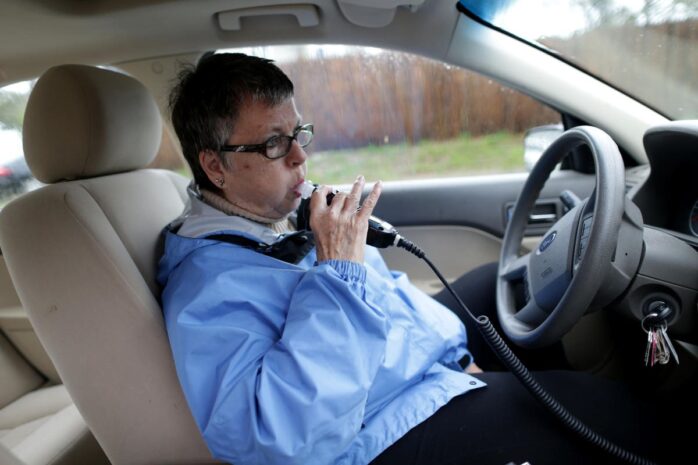Driving under the influence of alcohol or drugs remains a significant concern on roads worldwide.
Every year, thousands of incidents, ranging from minor collisions to fatal crashes, can be directly attributed to individuals operating vehicles while impaired by these substances.
The physical and mental alterations brought on even by seemingly insignificant quantities can lead to catastrophic outcomes.
As these substances are consumed more frequently, their long-term effects on driving abilities become even more pronounced, making it necessary to grasp the full breadth of their impact.
This article examines how prolonged alcohol and drug use can detrimentally influence one’s ability to drive. Our aim is not only to present raw data and statistics, but to understand the underlying neurobiological changes and their manifested outcomes on the roads.
By understanding these long-term effects, we can better equip ourselves with the knowledge to prevent such incidents and make informed decisions.
The chronic consumption of alcohol and drugs exponentially exacerbates the risks associated with driving, necessitating more intensive preventive measures and public awareness campaigns.
The Neurobiology of Alcohol and Drug Use

The human brain, a complex network of interconnected neurons, is remarkably susceptible to the influences of alcohol and drugs.
At the foundation of this relationship is the brain’s reward system, primarily orchestrated by the release of dopamine—a neurotransmitter responsible for feelings of pleasure and satisfaction.
When alcohol or drugs enter the bloodstream, they interfere with the brain’s normal processing, often leading to an exaggerated release of dopamine. Over time, with continued use, these substances can essentially “hijack” the reward system, making the brain crave the substance to achieve the same level of pleasure or to simply feel “normal.”
This neurobiological alteration is foundational in understanding why individuals might repeatedly engage in substance use, even when aware of its adverse effects.
Immediate Effects of Alcohol and Drugs on Driving
When individuals consume alcohol or drugs and then get behind the wheel, they immediately subject themselves and others to heightened risks. These substances swiftly impair cognitive faculties essential for safe driving.
Judgment and decision-making become compromised, often leading drivers to misjudge distances or make rash choices on the road. Their reaction times are notably diminished, making timely responses to sudden obstacles or changes in traffic conditions challenging.
Some individuals might even find themselves needing sr22 insurance due to repeated offenses, showcasing the severity of their actions. Coordination, necessary for maneuvers like braking or steering, deteriorates.
Drivers might experience altered perceptions, misinterpreting speed, distance, or the intentions of other road users.
This disorientation is frequently paired with a boldness or overconfidence that propels increased risk-taking behavior, turning an ordinary drive into a potential hazard.
Chronic Effects of Alcohol and Drug Use on Driving Abilities

The Concept of Tolerance
Over time, regular consumers of alcohol or drugs develop a tolerance, meaning they require larger quantities of the substance to attain the same effects. This increased consumption can deceive users into a false sense of sobriety.
Believing that they’re less affected due to their tolerance, they may assume they’re fit to drive, not recognizing that their motor skills and judgment are still significantly impaired.
Cognitive Decline
Over years, chronic users often display noticeable deficits in attention span, memory recall, and decision-making processes.
For drivers, this means a reduced capacity to concentrate on the road, remember traffic rules or recent events, and make sound split-second choices, needed for safe driving.
Physical Health Consequences
The ravages of substance abuse extend beyond the brain. Chronic alcohol and drug consumption can lead to severe health complications, including liver dysfunction, cardiovascular diseases, and respiratory issues.
These ailments, in turn, can cause fatigue, dizziness, or shortness of breath—further diminishing one’s ability to drive safely.
The Role of Addiction

The insidious nature of addiction, rooted in both physical and psychological dependencies, plays a decisive role in driving behaviors. As individuals become more dependent on a substance, the compulsion to use—even in inappropriate or dangerous situations—intensifies.
This makes addicted individuals more susceptible to driving under the influence, often rationalizing such decisions as necessary or underestimating the risk due to their frequency of use.
Symptoms like tremors, anxiety, irritability, or even hallucinations can manifest when the substance is not consumed.
Such withdrawal symptoms can be debilitating, severely compromising a driver’s ability to focus, react appropriately, or even maintain control of their vehicle, thereby elevating the risk of accidents manifold.
The Impact on Accident Rates and Severity
Driving under the influence of alcohol or drugs has long been identified as a significant risk factor for road accidents, both in terms of frequency and severity.
According to the National Highway Traffic Safety Administration (NHTSA), in 2019, 28% of all motor vehicle traffic fatalities in the U.S. were caused by alcohol-impaired driving crashes.
This statistic emphasizes the grave reality that nearly a third of all traffic-related deaths are directly linked to alcohol consumption.
Beyond sheer numbers, crashes involving substance-impaired drivers are often more severe, leading to a higher incidence of fatalities and grievous injuries.
Such tragic outcomes stem from the affected driver’s compromised judgment, slowed reflexes, and increased inclination for rash decisions, often culminating in high-velocity impacts or perilous road situations.
Conclusion

Driving under the influence of alcohol or drugs is not just an individual’s lapse in judgment, but a pervasive issue with far-reaching consequences for society at large.
Understanding the multi-faceted impacts, from immediate cognitive impairments to long-term health and addiction concerns, emphasizes the urgency of adopting comprehensive countermeasures.
Through collective efforts, encompassing awareness, stringent regulations, technology, and support systems, we can move towards safer roads and more informed choices.



















